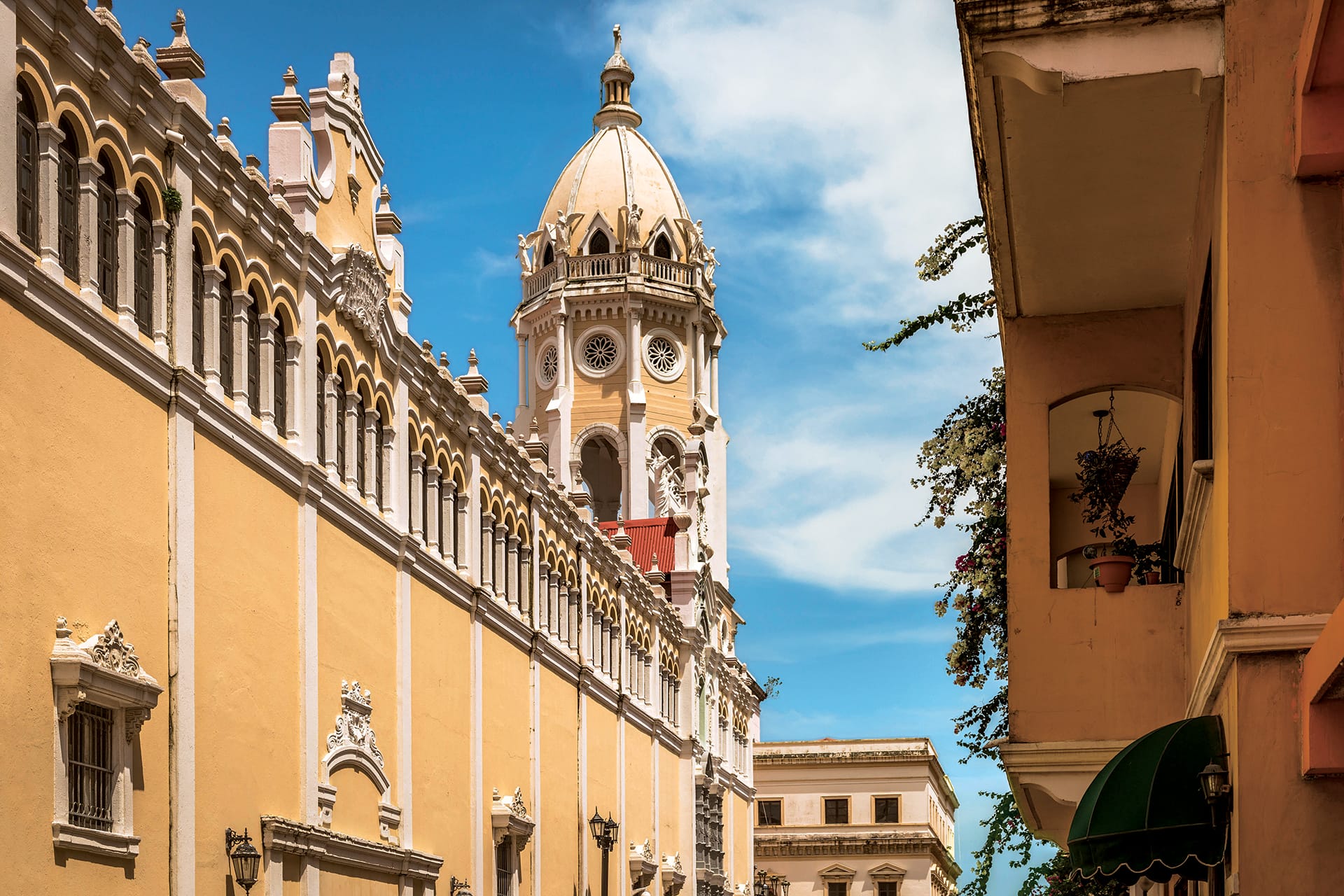See Why Panama Is Ripe for Rediscovery
A flurry of new resorts and a burgeoning local arts scene are reshaping the Central American paradise

As the gateway between Central and South America, Panama is ripe for discovery, offering both lively city allure and secluded tropical retreats barely an hour apart. Here, cultural adventurers can explore historical buildings gracefully reimagined as luxury hotels, sample locally sourced cuisine prepared by culinary rising stars, and stroll cobblestone streets where noteworthy examples of Spanish, Italian, and French architecture stand shoulder to shoulder. That’s all before spending a few days unwinding in an artfully appointed overwater bungalow.

Most visitors start their travels in Panama City, with its towering modernist skyscrapers that give way to the coastal district of Casco Viejo, a UNESCO World Heritage Site at the peak of a renaissance. Ornate buildings, originally conceived by those arriving in Panama to build the famed canal, are being restored as restaurants, cultural centers, and hotels, including the latest arrival, the Sofitel Legend Casco Viejo. Renovated by Manuel Choy of Panamanian firm Architect S.A., the Sofitel occupies the former Club Unión, built in 1917 to house the city’s first social club, visited in its heyday by Queen Elizabeth II and Prince Philip, Albert Einstein, and Charles Lindbergh.


“Casco Viejo is an amazing neighborhood, with each corner telling a story, each street bursting with culture, and each plaza with great gastronomical offerings,” says David Kianni, general manager at the Sofitel, which occupies a prime spot near iconic structures such as the Teatro Nacional de Panamá and Iglesia San Francisco de Asís (both also restored by Choy). The hotel retains its historic flavor, with French colonial–style architecture, archival photographs, and myriad encaustic tiles paired with contemporary design.

Further boosting the city’s energy is the growing attention to the arts. Travelers can tour the Museo de la Mola, an institution dedicated to the ornate textiles of the indigenous Guna women, or shop the next Menos de Mil art fair, so named because the works on display cost less than $1,000 each. Running from October to April 2024, the fair is hosted by the burgeoning Arte Museo Casco Antiguo, which is constructing a new museum in Casco Viejo, set to open later this year. Vibrant murals depicting las mamis, Panamanian women featured in whimsical portraits by local artist Rolo De Sedas, animate a picturesque avenue filled with establishments elevating the Panama food scene, such as Fonda Lo Que Hay, rated one of Latin America’s best 100 restaurants, and craft coffee studio Sisu.
“The main character in my work ‘las mamis’ symbolize that nature with which I surround myself,” says De Sedas, whose figures were recreated as larger-than-life sculptures for the country’s recent Carnaval celebration. “I don’t like art that is only exhibited in galleries or museums; I prefer to go out into the streets, make things, and for people to identify with what they see, to make it their own.”

As the country rapidly develops, Juan Canela, a curator at the Museo de Arte Contemporáneo, sees emerging Panamanian artists driving the conversation forward as they explore topics of gender, identity, and coloniality in their work. “I feel a generational change in the way artists deal with really important subjects,” says Canela, citing several to watch: multidisciplinary artist Lulu V. Molinares; Giana De Dier, who crafts mixed-media collages examining Afro Caribbean migrants; and Risseth Yangüez Singh, whose practice includes performance, installations, and photography.


Also drawing attention is the landscape, where breathtaking private islands support stunning eco-conscious resorts like Islas Secas and newcomer Nayara Bocas del Toro. “We imagined glimpsing the sea between mangrove branches and sought to create a retreat that would be both lofty and cozy,” says Elora Hardy of design firm Ibuku, who crafted Bocas del Toro’s recently introduced tree house suites. “Reclaiming the submerged wood columns with all their character and capping them with curving elements of bamboo felt like bringing the strength of the past into an elegant, natural future.” An astute observation that could describe the entire country’s glorious new beginning.
A version of this article first appeared in print in our 2023 Summer Issue under the headline “Sea Change.” Subscribe to the magazine.